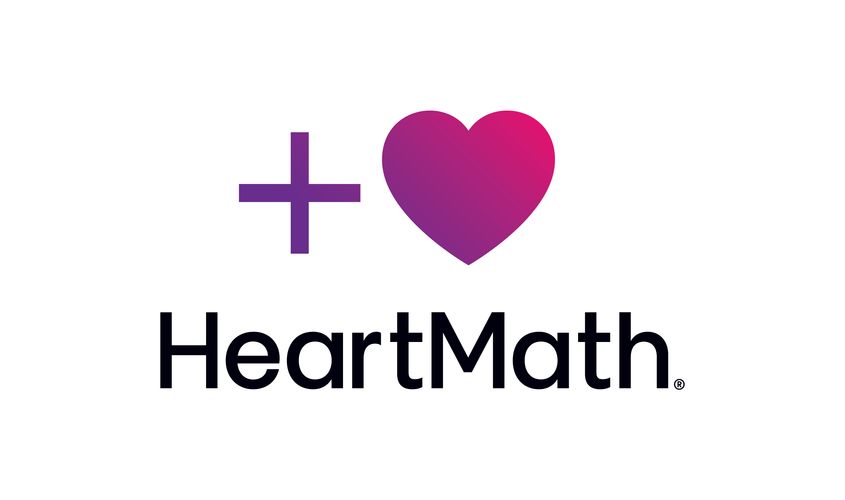The HeartMath system of techniques and technologies is at once the most accessible, comprehensive and versatile of these science-based approaches to achieving the wide-ranging benefits of energetic self-regulation.
HearthMath Technology
The HeartMath Institute has been working for over 25 years to understand the energy of the heart and how it affects the human body. There are over 300 peer-reviewed studies utilizing HeartMath to research the correlation of heart and mind both on physiological and energetic levels. The HeartMath Institute defines HeartMath technology as:
"an innovative approach to improving emotional wellbeing. Learn to change your heart rhythm pattern to create physiological coherence; a scientifically measurable state characterized by increased order and harmony in our mind, emotions and body."
Modern day mindfulness
For centuries, practices rooted in the ancient meditation traditions of the East have helped people achieve energetic balance and reap the benefits of doing so. Those practices persist to this day because of their power to calm the mind and body.
The ancients recognized that meditative practices are a doorway to inner peace, deeper wisdom and better health. In our own time, neuroscience researchers are explaining just how those meditative practices work their magic. We now have access to highly nuanced models of how our inner landscapes work, as well as a clearer picture of how we as individuals can intervene on our own behalf with self-regulation practices that help us manage the barrage of stressors we experience as we navigate the challenges of the modern world.
As a result, we don’t need to spend years developing a stable meditation practice to experience the profound benefits of calmer minds and bodies. Advances in our understanding of how the human brain and nervous system drive basic physiology are putting effective stress management within reach of nearly everyone. The modern neurosciences suggest a variety of simple practices that can interrupt the activity of the fear centers in our brains to prevent the depletion of energy, impaired cognitive performance and compromised health that result from chronic sympathetic nervous system activation (aka the “fight or flight” response).
How HeartMath helps manage stress
My biggest challenge as a HeartMath coach is convincing people that simple HeartMath practices can profoundly strengthen their ability to manage stress and minimize its impact on their health and performance. The non-profit HeartMath Institute has developed a comprehensive system of techniques, assessment tools, and biofeedback technologies to facilitate more optimal autonomic nervous system (ANS) balance. Health care providers can find technology in the HeartMath system to assess the ANS function of their clients. But I believe the real power of HeartMath is how readily it lends itself to self-care routines, with or without professional guidance or assistive technology.
Working with ANS dynamics has enormous potential to shift health trajectories in positive directions, given the link between chronic stress, ANS imbalances and the development of an array of health issues. In the context of the modern world, with its onslaught of stressors from all directions, achieving more optimal ANS balance with self-regulation tools can be a game-changing addition to anyone’s self-care routines.
HeartMath: Heart rate variability (HRV) and the Autonomic Nervous System (ANS)
The HeartMath system has its roots in extensive research into the implications of heart rate variability (HRV) for the kind of ANS balance that supports more optimal physiological functioning. Our bodies are designed to spend most of their time in the parasympathetic arm of the ANS, sometimes referred to as the “rest and restore” mode, because it supports our routine bodily and cognitive functions. The chronic triggering of sympathetic nervous system “fight or flight” responses in the absence of life-threatening emergencies promotes a broad array of mental and physical dysfunction, as resources are pulled away from routine bodily functions to prepare us to fight or flee for our lives.
Among the wide-ranging HeartMath Institute research initiatives is a decades-old core of original research into the implications of HRV and of cardiac coherence for optimal physiological functioning. As the HeartMath Institute and others have shown, HRV, a measure of the normally occurring beat-to-beat changes in the heart rate, is a readily accessible window into autonomic function. Optimal levels of HRV reflect heathy function, while less than optimal levels are markers of health problems, often in the pre-symptomatic, developing stages of disease progression. Simply put, the HeartMath system of self-regulation practices are designed to promote improved HRV for more optimal ANS balance, leading to better health outcomes.
HeartMath uses the terminology of cardiac coherence to describe more optimal HRV states. Coherent heart rhythms support increased synchronization across many bodily systems, resulting in more efficient utilization of energy and more optimal functioning. Since the heart is the strongest oscillating system in the body, it tends to pull other biological oscillators into synchronization with its rhythms, leading to the entrainment of these systems. Therefore, using techniques of self-regulation to improve cardiac coherence is a relatively simple and direct way to improve ANS function and support positive health outcomes.
HeartMath and your body's stress-response
Several HeartMath techniques are designed to help us intervene with the stress response as it’s occurring. Simple practices that can be used in the course of daily life, as stressors are being experienced, offer an advantage over practices that require extended time in stillness and silence, as with many meditative practices. The neurosciences are showing us that intervening the moment we experience a stress response enables us to gradually reprogram the fear centers in our brains to be less reactive. Repeatedly shifting ourselves into more coherent states helps those coherent states become more enduring traits. Over time, with continued practice, we naturally incline in the direction of greater resilience in the face of stressors. That kind of shift in a person’s default patterns of reactivity is the holy grail of stress management practice, and what the vast majority of us can expect to achieve with consistent self-regulation practice.
A Many-Layered and Comprehensive System
The HeartMath system of practices is also distinctive in that it can go the distance, from the most basic self-regulation practices to a range of more ambitious applications of those practices. The sequence begins with simply managing stress more effectively (personal coherence); then progresses to practices designed to build better relationships (social coherence) and eventually to using HeartMath to pursue the loftiest personal growth aspirations a person might have, using the wisdom of intuitive guidance that’s facilitated by heart coherence. Personal Coherence HeartMath practice begins with simple techniques to achieve better cardiac coherence, manage stress more effectively, and spend less time in energetically depleting states. Optional assistive technologies provide HRV feedback in real time to support learning how to improve cardiac coherence. HeartMath and other researchers have zeroed in on emotions as immediate drivers of physiology.
Emotions and HeartMath
Feeling states quickly impact the nervous system, for better or worse. Different emotions have distinct energetic signatures and dramatically different impacts on cardiac coherence. Activating a positive emotion, such as appreciation or gratitude helps to initiate coherent heart rhythms. Emotions we typically label negative, such as annoyance or frustration, result in less coherent heart rhythms, and ultimately, if chronic or sustained long enough, energetic depletion and physiological dysfunction. HeartMath assistive technologies show us in real time the improvements in cardiac coherence that follow from shifting ourselves out of the chaotic heart rhythms associated with depleting emotional states.
The objective is not to deny ourselves the full range of emotions, but to become more aware of the cost to mental and physical health of spending a lot of time in the depleting states of chronic sympathetic nervous system activation. Equipped with that knowledge and with a few simple techniques for shifting our physiology into more health-promoting ANS balance, we can take charge of our stress responses and reap the health and performance benefits of doing so. Social Coherence Once we learn to use heart coherence to self-regulate our physiology, HeartMath practices show us how to apply that coherence to interpersonal challenges and to group dynamics. These practices help us examine the impact of our coherence, or lack thereof, on others, and to bring more coherence to our relationships. That can facilitate more effective communication, better teamwork and greater harmony in our relationships.
Intuitive Guidance and HeartMath
Intuitive Guidance HeartMath techniques show us how cardiac coherence can facilitate a better connection with our own intuitive guidance, literally the intelligence of the human heart. That can open the door to greater clarity, better decisions and often an improved sense of our own core values, enabling closer alignment with our highest aspirations. And that’s a natural, organic outcome of settling into HeartMath practices, for those who choose to go the distance with the full range of HeartMath possibilities.
The accessibility, power, and versatility of the HeartMath system means
that everyone can benefit from at least a little HeartMath. The basic
techniques seem to be helpful regardless of age or background, whether a
person is new to self-regulation or a seasoned meditator hoping to extend
the benefits of meditative calm and balance into all areas of life. Everyone
can enrich their self-regulation tool kit with a little HeartMath.
For an overview of the wide-ranging HeartMath portfolio of research
initiatives, see the HeartMath Institutes’s Science of the Heart, Vol. 2(2015), which includes an extensive bibliography of decades of scientific
research relevant to the various HeartMath initiatives













